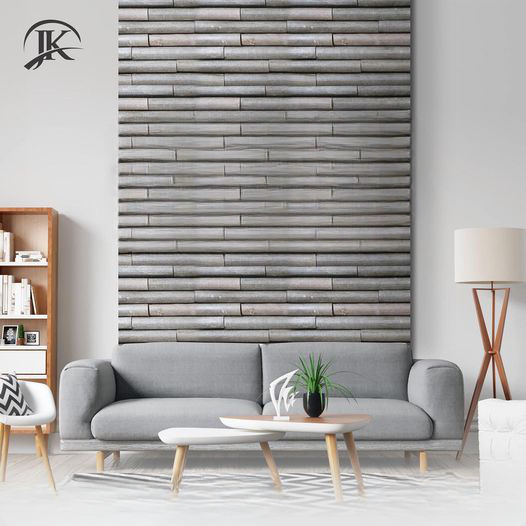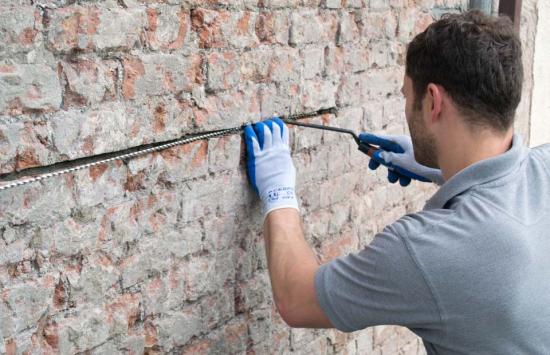In today’s construction industry, sustainable design has become more crucial than ever. Architects, designers, and builders are seeking environmentally friendly materials and techniques to minimize the impact on our planet. One such solution is natural stone wall cladding, which combines the beauty of nature with sustainable practices. In this blog, we will explore the importance of sustainable design and delve into the world of natural stone wall cladding as a sustainable building material.
Sustainable design goes beyond aesthetics and functionality; it focuses on minimizing environmental impact and preserving natural resources. With rising concerns about climate change and the depletion of non-renewable resources, sustainable design plays a vital role in creating a greener future.
Natural stone wall cladding involves the use of real stone pieces to cover or enhance the exterior or interior walls of a building. This technique not only adds a touch of elegance but also contributes to sustainable design principles. Natural stone cladding is available in a variety of types, such as granite, limestone, marble, and slate, each offering unique aesthetic and structural qualities.
Using natural stone as a cladding material aligns with sustainable design goals due to its inherent characteristics. It is a natural and abundant resource, making it a renewable option for construction. Additionally, natural stone by JK Stone offers excellent durability, longevity, and thermal insulation properties, reducing the need for frequent replacements and improving energy efficiency.
Advantages of Natural Stone Wall Cladding in Sustainable Design:
A. Energy Efficiency: Insulating Properties of Natural Stone
Natural stone walls possess excellent insulating properties, helping to regulate the temperature within buildings. Its thermal mass allows it to absorb and store heat, reducing the need for excessive heating or cooling. By incorporating stone wall cladding, sustainable buildings can enhance energy efficiency, leading to reduced energy consumption and lower carbon emissions.
B. Durability and Longevity: Reduced Need for Replacement or Maintenance
One of the notable advantages of natural stone wall cladding is its exceptional durability and longevity. Unlike synthetic materials, JK Stone natural stone can withstand the test of time, resisting wear, tear, and weathering. By choosing natural stone cladding, sustainable designs can minimize the need for frequent replacements or repairs, resulting in long-term cost savings and reduced environmental impact.
C. Environmental Impact: Low Carbon Footprint and Minimal Waste Generation
Natural stone wall cladding boasts a significantly lower carbon footprint compared to many other construction materials. With its abundant availability, sourcing natural stone locally reduces transportation-related emissions. Additionally, at JK Stone, natural stone is typically extracted using environmentally conscious practices. Moreover, during installation, natural stone produces minimal waste, making it a sustainable choice for construction projects aiming to minimize their ecological footprint.
D. Aesthetics and Versatility: Enhancing the Visual Appeal of Sustainable Buildings
Beyond its eco-friendly qualities, natural stone cladding adds a touch of elegance and timelessness to sustainable buildings. With a wide range of colors, textures, and patterns available, JK Stone natural stone offers architects and designers the freedom to create visually stunning and unique structures. Whether it’s a contemporary or traditional design, the versatility of natural wall cladding allows it to harmonize with various architectural styles, enhancing the overall aesthetic appeal of sustainable buildings.
Now, let’s explore the key considerations for incorporating natural wall cladding as an eco-friendly building material into your design projects.
Sourcing and Extraction: Ethical Practices and Responsible Sourcing
When it comes to sustainable design, the journey of natural stone begins with ethical practices and responsible sourcing. It’s crucial to select suppliers who prioritize environmentally friendly extraction methods and adhere to fair labor practices. By choosing stones from JK Stone quarries that actively promote conservation, reclamation, and rehabilitation, you contribute to the preservation of natural resources.
Installation Techniques: Minimizing Waste and Maximizing Efficiency
Optimal installation techniques play a significant role in reducing waste and maximizing efficiency when working with natural stone wall cladding. Skilled craftsmen at JK Stone employ precision cutting and fitting methods to minimize material wastage.
Maintenance and Cleaning: Eco-Friendly Approaches for Preserving Natural Stone Cladding
Preserving the beauty and longevity of natural stone wall cladding requires proper maintenance and cleaning techniques. Embrace eco-friendly practices that minimize the use of harsh chemicals and detergents, which can harm both the stone and the environment.
Embrace the beauty of nature while building sustainably – choose JK Stone natural stone wall cladding for your next project and make a lasting positive impact on the environment.
Remember, building with nature is the path toward a greener future.








